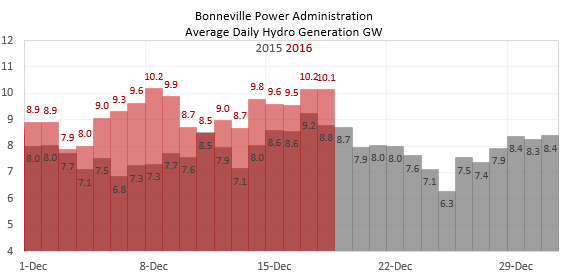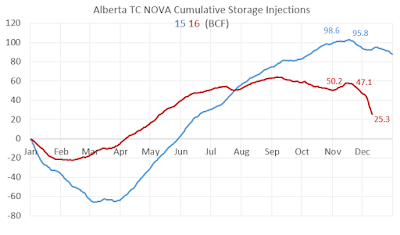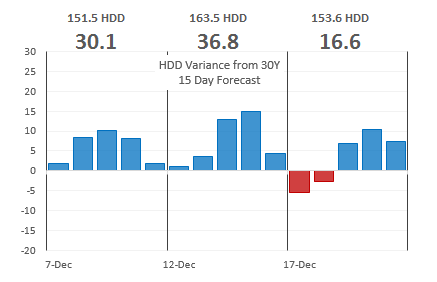The May 2016 low of 316 oil rigs marked the beginning of a steady march back to the oil patch, though the count is still 31 rigs below this date last year. The improvements in drilling and completion technology in the meantime suggests that the current drilling capabilities exceed 2015 by a growing margin. Most of this week's rigs were added in the Permian, which continues to show itself the prime basin for shale drillers.
Gas rig counts also gained one, and the fleet is now over 50% larger than the low point of 81 seen in May. Forward prices indicate that the count should continue to strengthen, and 2017 pipeline expansions in the northeast should enable that trend in the Marcellus/Utica to manifest eventually as well.
Meanwhile in Canada, enthusiasm for both oil and gas development is unabated. As we approach the seasonal drilling peak in Jan/Feb, both oil and gas activity should outpace 2016. This week Canada dropped one net oil rig but at 116 rigs it remained above last year's 71 by a large percentage. Gas rigs added another 4, to 116, and is near parity with US gas rig counts!!! What kind of production will that translate into in 2017+?


















































